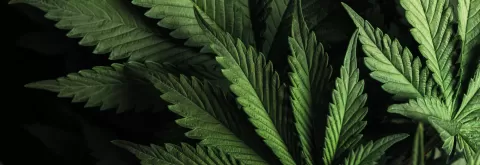Aside from the two dominant cannabinoids, THC and CBD, KD Phyto® also provides common minor cannabinoid isolates with purity above 98%. These rare cannabinoids can be found in the trichomes of the flowers of Cannabis Sativa L. Preliminary studies suggest that Cannabinol (CBN), Cannabichromene (CBC), Cannabigerol (CBG), Tetrahydrocannabivarin (THCV) and Cannabidivarin (CBDV) may have potential benefits for several health conditions.
The market is quite new globally; however, regulations are beginning to become more clear. KD Phyto® is already paving the way to lead this market in Europe aligning with the governmental authorities regulating the production and sales of these minor cannabinoids. At the same time, KD Phyto® aims to support the authorities for the regulation of these ingredients to continue setting the standard for professionalism in the Cannabis Industry.
Cannabinol (CBN):
The plant-based phytocannabinoid, Cannabinol (CBN), is found in the cannabis plant due to chemical changes that occur naturally during the drying and aging process. CBN is a mildly psychoactive cannabinoid that can be synthesized in a laboratory setting and is also a degradation product of delta-9-tetrahydrocannabinol THC due to exposure to light, heat or air. The interaction of CBN with the CB1 and CB2 receptors increase the activity of cannabinoids with the endocannabinoid system.

Cannabichromene (CBC):
Cannabichromene (CBC) is a non-psychoactive cannabinoid that has been a prominent candidate in medical research over the past years. Unlike the other popular cannabinoids, CBC binds poorly to the CB1 receptors; however, interacts with TRPV1 and TRPA1 receptors which are both linked to the body's pain perception. CBC works to increase the release of natural cannabinoids prduced inside the body by the endocannabinoid system.

Cannabigerol (CBG):
Cannabigerol (CBG) is formed when the parent cannabinoid of all other cannabinoids, Cannabigerolic Acid (CBGA), is decarboxylated. Despite its connection to THC production, CBG is non-intoxicating and interacts directly with the body's endocannabinoid system. While it occurs naturally in cannabis and hemp plants, breeders focus on crossbreeding several cultivars to produce higher levels of CBG due to its potential.

Tetrahydrocannabivarin (THCV):
Tetrahydrocannabivarin (THCV), even having a similar name to tetrahydrocannabinol or better known as THC, this rare cannabinoid produces different effects than THC, resulting in a non-psychoactive ingredient. This difference in effect is largely due to their different effects at CB1. THC is an agonist at CB1 while THCV is an antagonist at the same receptor and as such induces opposing effects. Most cultivars of cannabis contain only trace amounts of THCV; however, it is most abundant in African sativas and can be further exploited through extraction techniques.

Cannabidivarin (CBDV):
Cannabidivarin (CBDV) is a non-psychoactive homologue of CBD. Similar to THCV, CBDV is only found naturally in cannabis plants at an undetectable amount; however, it is most prevalent in Asian and African indicas. CBDV is of interest due to its interaction with the neurochemical pathways in our bodies.

References:
CBN
https://www.sciencedirect.com/science/article/abs/pii/S0891584922000016
https://www.frontiersin.org/articles/10.3389/fphar.2021.777804/full
CBC
https://www.ncbi.nlm.nih.gov/pmc/articles/PMC3417459/
CBG
Cannabinoids and the digestive tract - PubMed (nih.gov)
Anti-Bacterial Properties of Cannabigerol Toward Streptococcus mutans - PubMed (nih.gov)
Novel CBG Derivatives Can Reduce Inflammation, Pain and Obesity - PubMed (nih.gov)
THCV
https://jcannabisresearch.biomedcentral.com/articles/10.1186/s42238-020-0016-7
Δ9-Tetrahydrocannabivarin (THCV): a commentary on potential therapeutic benefit for the management of obesity and diabetes | Journal of Cannabis Research | Full Text (biomedcentral.com)
CBDV
https://www.nature.com/articles/s41398-019-0654-8 https://www.sciencedirect.com/science/article/abs/pii/S0163725821000802



